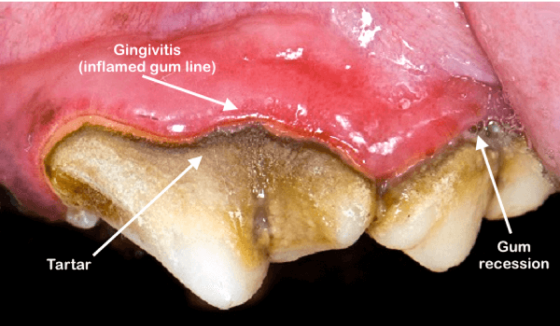A number of dog breeds are particularly prone to dental disease and require special care. These include:
1. Toy breeds such as Poodles, Malteses, Pomeranians and Chihuahuas. Toy breeds have an increased tendency to develop dental disease due to their small mouths and reluctance to eat crunchy dry food. They also tend to be less eager to chew and grind their teeth on dental chews.
For toy breeds, begin tooth brushing from a young age if possible. Despite being small, their little mouths are usually not malformed like brachycephalic breeds, so it's still possible to brush their teeth at home. A dental scale & polish is also a good idea every 6-12 months, and maintaining on a dental care diet may be ideal.
2. Flat faced (brachycephalic) breeds such as Pugs, Boxers, Bulldogs, Cavalier King Charles Spaniel, and French Bulldogs are highly prone to dental disease due to their malformed face and jaw. Their pushed-in face may be endearing, but it also sets her up for periodontal disease. Malocclusions and crowded teeth are common, which allow for food entrapment and bacteria buildup.
The disfigured shape of brachycephalic mouths and muzzles cause a number of problems:
- It can be extraordinarily difficult to brush their teeth
- Dental diets may not be as effective, as the kibble cannot encase the entire tooth during chewing
- Dental chews and bones are not as effective, as the scraping action does not occur on teeth in an abnormal position
For brachycephalic breeds, a scale and polish procedure at your vet is essential every 6 months. At home treatments are still recommended in conjunction, including tooth brushing, dental diets, and chews.
Ultimately, your dog's dental health is just as important as your own. With a combination of tooth brushing, dental chews, and regular check ups, your dog's mouth should be clean and healthy. If you are able to stay on top of your pet's dental care for good, you will be setting your dog up for a much healthier, happier and long life.
References
1. White DJ. Dental calculus: recent insights into occurrence, formation, prevention, removal and oral health effects of supragingival and subgingival deposits. Eur J Oral Sci. 1997 Oct;105(5 Pt 2):508-22.
2. Stepaniuk K. 2019. Periodontology. In: Lobprise H B and Dodd J R, editors. Wiggs's veterinary dentistry principles and practice. New York (NY): Lippincott-Raven; p. 81â108.
3. Gawor J, Jank M, Jodkowska K, Klim E, Svensson UK. 2018. Effects of Edible Treats Containing Ascophyllum nodosum on the Oral Health of Dogs: A Double-Blind, Randomized, Placebo-Controlled Single-Center Study. Front Vet Sci. 2018; 5: 168. Published online 2018 Jul 27
4. Harvey CE, Serfilippi L, Barnvos D. Effect of frequency of brushing teeth on plaque and calculus accumulation and gingivitis in dogs. J Vet Dent. (2015) 32:16â21.

